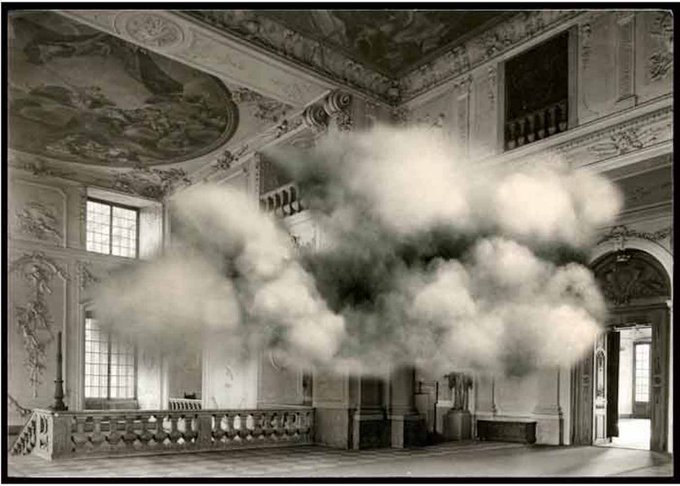The Fight for Life. Artist Otto Marseus van Schrieck (1620-78) was fascinated by the violence & beauty of plants & animals that survived on the bottom rung of nature’s ladder. 200 years before Darwin, he believed he could show, "God’s almighty finger in the anatomy of a louse”
More Strange & Fantastical Post-Apocalyptic Ruins by François de Nomé (1593 – after 1620). The Frenchman lived in Naples, and created paintings of imaginary ruins - some inspired by the Fall of Rome & Sack of Troy. He lived 100 years before Piranesi & 300 before the Surrealists.
Eternal Exile. After WW1, Italian Jewish Artist, Arturo Nathan began psychoanalysis & took up painting as therapy. He painted many shipwrecks & exiles. He was deported to Germany in 1944, "first to the concentration camp of Bergen Belsen, then Biberach, where he died" - aged 53.
NASA's Art Nightmare. NASA recently commissioned artists Nicholas Kahn & Richard Selesnick to make photo artworks to celebrate the touchdown of the Curiosity Rover on Mars. The artworks are beautifully bleak, nightmarish & surreal. Perhaps NASA wanted something more up-lifting.
Self Portrait w/ Eye Glass. Anna Dorothea Therbusch was a Prussian portrait Painter (1721-1782). She gave up painting to help her husband, until 1760, when "with spousal obligations discharged, as 'a short-sighted, middle-aged woman' she abandoned her family to return to her art"
@oubey The same iconic 19th century image is also very popular in YA and Sci-Fi fiction- here's The Last Star - a young adult science fiction novel written by American author Rick Yancey (2016). Interesting to note also the female protagonist
Britain's First Robot. Eric was built in 1928 by a war veteran & an engineer. He opened an exhibition - "Eric rose to his feet, bowed & gave a 4-minute opening address." After that,"no-one knows what happened to him, whether he was blown-up or taken to pieces for spare parts."
Humans have vanished from History. Clouds appear within buildings. In the photographs of Pablo Genovés, palaces, cathedrals & libraries are invaded, violently or quietly, by outside forces, and transformed by them.
Why are so many Blockbuster Movie Posters based on one 19th Century painting? "Wanderer Above the Sea of Fog" by Kaspar David Friedrich (1818) is arguably a symbol of how modern humans perceive themselves - lost & alone before the meaninglessness of existence - but heroically so.
Pt.2. More fantastical castles from the hand of Victor Hugo (1802-1885) author of Les Misérables &The Hunchback of Notre Dame. The romantic artist Delacroix once said that if Hugo had chosen to be an artist and not a writer, Hugo would have “outshone the artists of their century”






































